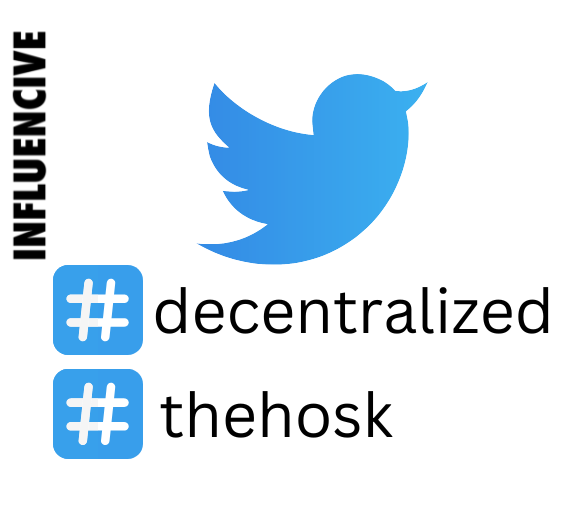Charles Hoskinson, the co-founder of Cardano, recently put out a YouTube video that lays out a structure and methodology to re-create Twitter in a more decentralized manner. The video is nearly an hour long and details several key areas that could help Twitter decentralize. This could be done by improving its algorithm, content, privacy, and through creation of a crypto-based marketplace.
In the live video addressed to Musk and Twitter staff, Hoskinson refers to the presentation as a “big stream of consciousness,” and proceeds to first lay out the major components of present-day Twitter:
- Content Curation / Information Flow (where most centralization resides)
- Data Storage
- Computation Requirements
- Artificial Intelligence (AI)
Shortly after, Hoskinson states that the crypto space is good at creating solutions for peer-to-peer networks, protocols, cryptography, and incentivizes engineering…but is lacking in the decentralization of AI, computation, data storage, and curation. This presents a unique challenge of how to design Twitter in a decentralized, blockchain-based fashion while also managing to integrate cryptocurrency.
It’s important to note that there are many considerations mentioned in Hoskinson’s video not mentioned in this article. For a complete representation of his work, it’s highly recommended to watch his video in its entirety.
Hoskinson’s Recommendations
Utilize Decentralized Identifiers (DIDs)
A DID is basically a standard for proving identity that is “decoupled from centralized registries, identity providers, and certificate authorities.” DIDs can help solve verification problems in a decentralized manner. If DIDs are used, marketplaces for ‘verification as a service’ can be built and offered by various blockchain services. The DID system, combined with various next-generation identity verification providers, also provides a way for each Tweet to be proven as authentic and helps to reduce fraudulent Tweets from hacked accounts.
Reinvent the Twitter Feed
When a claim-based Tweet is made, such as “Breaking News – Trump died of a heart attack,” there are currently limited options to interact with the content (Reply, Retweet, Like, and Share). These options don’t allow for much nuance in how the content is spread, perceived, proven, or disproven. Reinventing the feed would entail adding significantly more options to interact with the content (Suspicious Content, Dislike, Tell Me More, Fact Check, etc…). Adding nuance to the feed would increase the accuracy and quality of the information being entered into the feed.
Add a Crypto Payment System
- Tweets could be backed with crypto. If the Tweet is proven to be false, the user making the Tweet would lose the crypto, which is also known as a veracity bond.
- Tweets could be made into NFTs and assigned a reputation score. If the user has a habit of Tweeting poor or misleading information, the user sinks lower on the reputation totem pole, and vice-versa.
- Crypto-based prediction markets could become part of the feed. For example, users could make predictions on who will win an election and put crypto behind their predictions. If their candidate wins, they keep their crypto plus a share from the losing predictors. The remaining share would go to Twitter.
Create Customizable Twitter Feed “Bins”
In the settings section, users could have the ability to tailor the content they get served. For instance, one bin could be all about trending content. When the user selects this bin, they only see what is trending. Other bins could include ‘People I Follow’ or ‘Recent News,’ etc. There could be as many bins as imaginable, and the user could also create their own custom bins on top of the pre-installed ones. The same types of customizable bins would also be applicable to advertisers wishing to serve their content.
At 38:00, Hoskinson makes some profound suggestions about how media corporations could participate in Twitter that would change the nature of media. This involves media placing veracity bonds (money placed to back a claim) on their content. Basically, CNN or Fox News could put a veracity bond on their Tweets, and if they’re proven wrong, or somewhat wrong, they lose the whole bond or just a portion. This way of dealing with media could significantly reduce heavy bias and place more power in the hands of citizen journalists.
Create An Advertising Marketplace with User Owned Data
This would happen by combining an internet browser like Brave browser with a crypto token such as the Basic Attention Token (BAT) with various advertising networks. This combination already exists, and Hoskinson says Twitter could refine and modify it to work inside the Twitter ecosystem. This type of user-owned data system and marketplace could enable Twitter users to receive crypto payments for interacting with advertisers, ways to tip other users, and prediction markets.
Finally, for an explanation of how Dogecoin fits into the decentralized Twitter ecosystem, scroll to the 43-minute mark in Hoskinson’s video (Hint: it involves a sidechain and using Doge for payments).
Overall, Hoskinson has great ideas for a more decentralized Twitter. It’s recommended to watch the entire video to catch all the suggestions not mentioned in this article.
This is a Contributor Post. Opinions expressed here are opinions of the Contributor. Influencive does not endorse or review brands mentioned; does not and cannot investigate relationships with brands, products, and people mentioned and is up to the Contributor to disclose. Contributors, amongst other accounts and articles may be professional fee-based.

